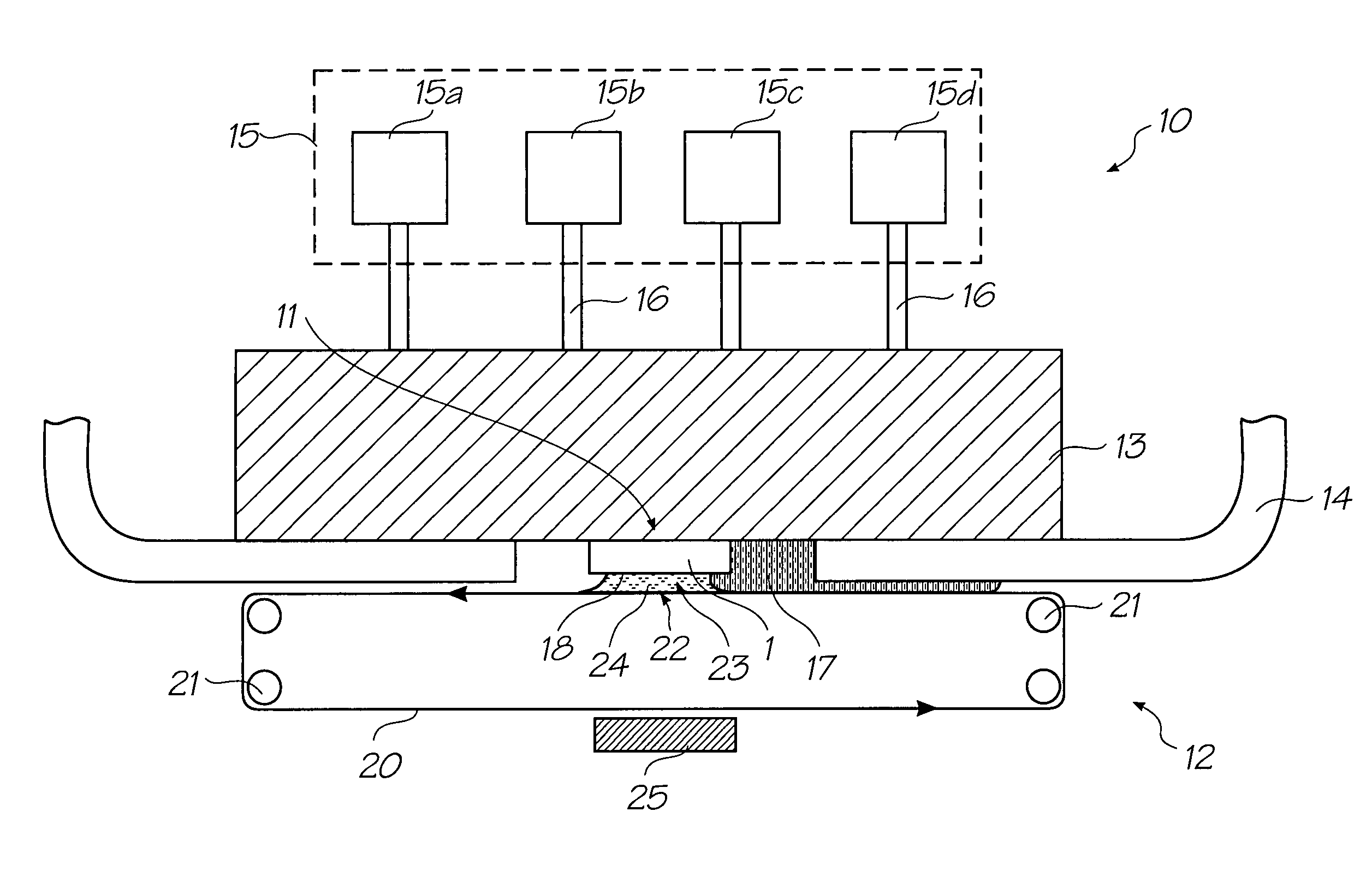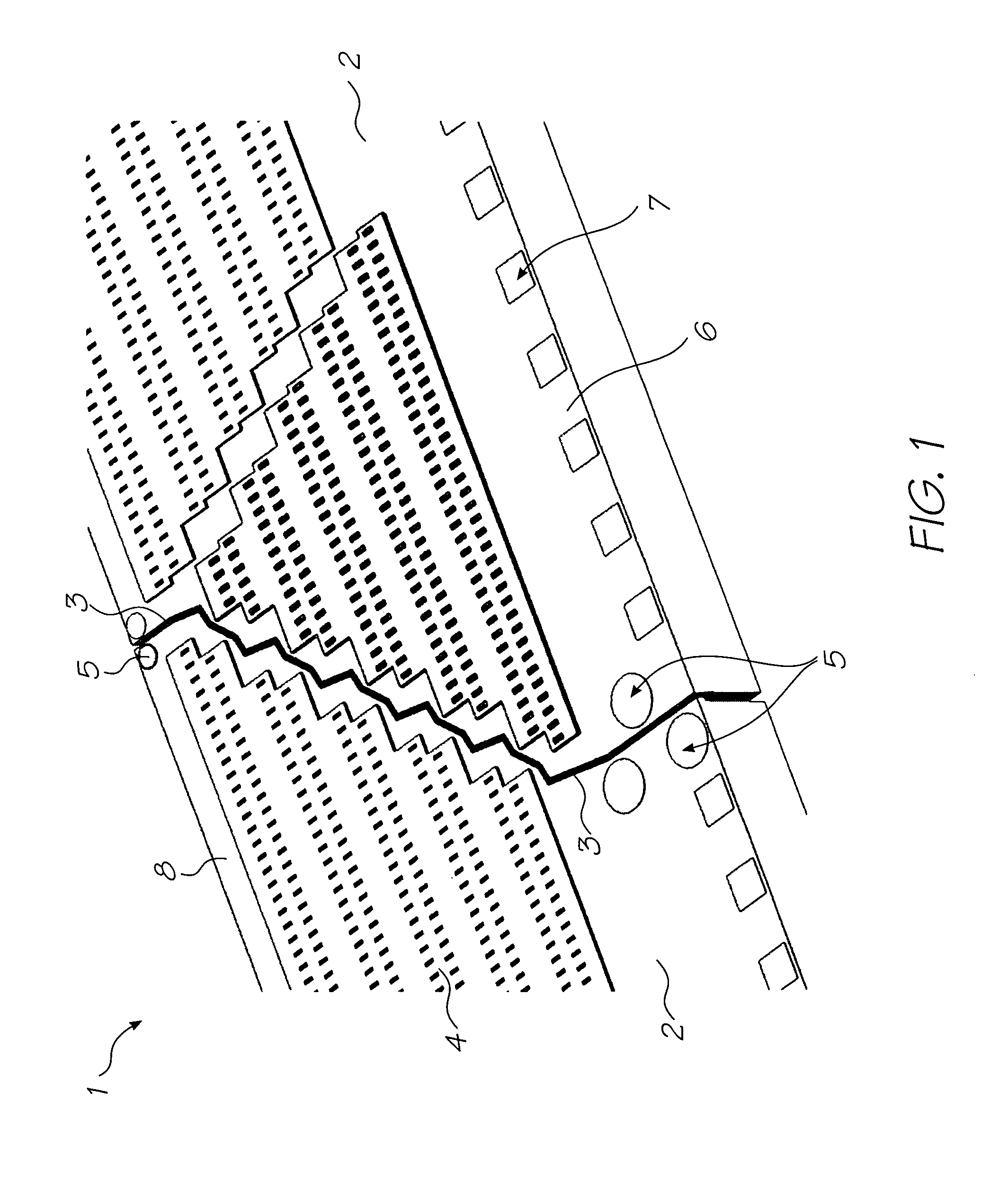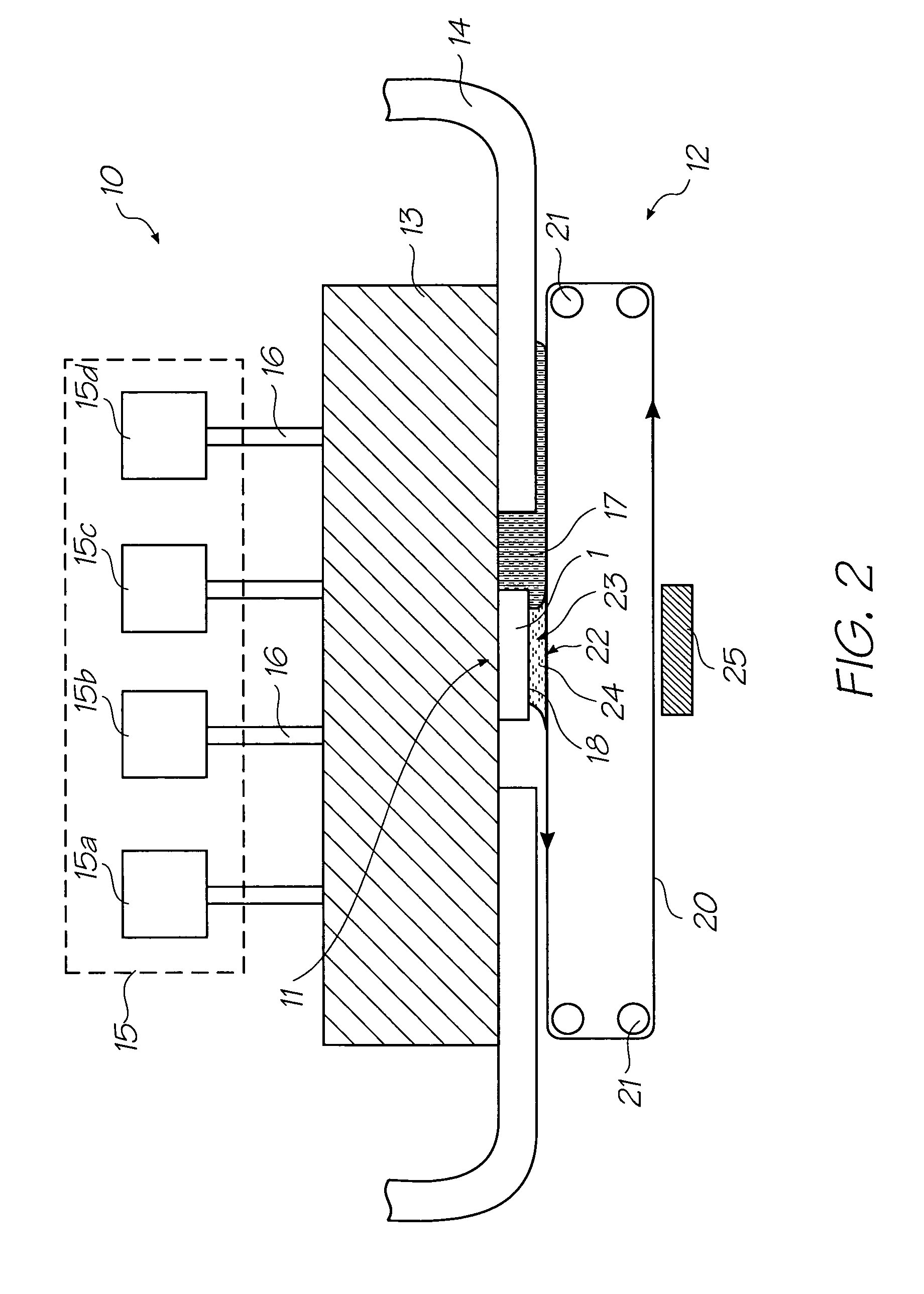Method of removing particulates from a printhead using film transfer
a film transfer and printhead technology, applied in printing, other printing apparatus, etc., can solve the problems of slow print speed of all commercially available inkjet printers, printhead failure, and particulates, which are a particular problem in high-speed pagewidth printing, so as to avoid sealing the cavity, avoid the effect of undesirable sealing the cavity and avoid the effect of printhead damage during maintenan
- Summary
- Abstract
- Description
- Claims
- Application Information
AI Technical Summary
Benefits of technology
Problems solved by technology
Method used
Image
Examples
Embodiment Construction
[0265]Referring to FIG. 1, there is shown part of a printhead 1 comprised of aligned printhead integrated circuits 2 abutting along their transverse edges 3. A complete pagewidth printhead (not shown) is formed by an array of printhead integrated circuits 2 abutting across the width of a page. Each printhead integrated circuit 2 comprises rows of nozzles 4, which eject ink onto a print media (not shown) fed past the printhead. Fudicials 5 assist in aligning the array of printhead integrated circuits 2.
[0266]A longitudinal edge portion 6 of the printhead 1 comprises a plurality of bonding pads 7 to which will be attached wire bonds (not shown) in the fully assembled printhead. An opposite longitudinal edge portion 8 of the printhead 1 does not have any bonding pads.
[0267]Referring now to FIG. 2, there is shown a schematic side view of a printhead maintenance assembly 10 comprising a printhead assembly 11 and an ink transport assembly 12. The printhead assembly 11 comprises the printh...
PUM
 Login to View More
Login to View More Abstract
Description
Claims
Application Information
 Login to View More
Login to View More - R&D
- Intellectual Property
- Life Sciences
- Materials
- Tech Scout
- Unparalleled Data Quality
- Higher Quality Content
- 60% Fewer Hallucinations
Browse by: Latest US Patents, China's latest patents, Technical Efficacy Thesaurus, Application Domain, Technology Topic, Popular Technical Reports.
© 2025 PatSnap. All rights reserved.Legal|Privacy policy|Modern Slavery Act Transparency Statement|Sitemap|About US| Contact US: help@patsnap.com



